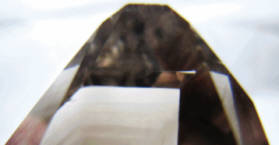
Best Website for Herkimer Diamond Information
Last Updated:

About this Webpage:


Free Website Where Herkimer Diamond Enthusiasts Share Information with the Public
Scroll down
Dr.C. did two talks at the Herkimer Diamond Festival (July)which are in a Youtube movie. The research on the Herkimer District is in need of samples and photos.
How can you help? Visit the "how to help" page.

Herkimer diamonds often contain other materials within them that are called inclusions. These inclusions can be minerals or bubbles. The bubbles are called fluid inclusions (locally called enhydros) as they often do contain fluid that was trapped during the crystal forming process. The most common type of inclusion is a fracture, and these can have a rainbow glimmer to them. The other common inclusion is a baby floater Herkimer diamond. A seperate page is dedicated to them. Below are photos and descriptions of various inclusions.


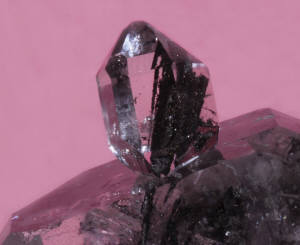
W. David Hoisington, Ph.D.

Bubbles as Inclusions

Hydrocarbon as Inclusions




Other Inclusions

Minerals as Inclusions
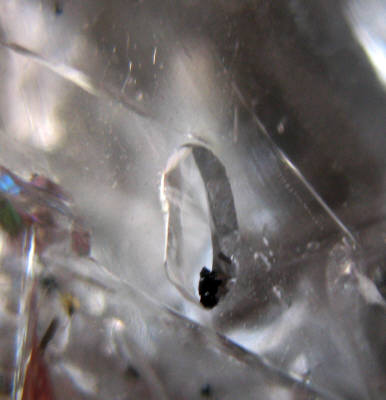
<-H
Above is a photo of "bubble trails" on the interior of a small Herkimer diamond. Distance across the photo is about 7 mm. Specimen is from Bob of N. Adams and was collected at DA in Fonda, NY 2008. By permission, photo Dr.C., 2009. (The "smudge" is the surface of the crystal face).
Of note are the small gas bubbles within the fluid inclusions, some with 2 rings indicating multiple phases, or types, of fluid/gas within the inclusion.
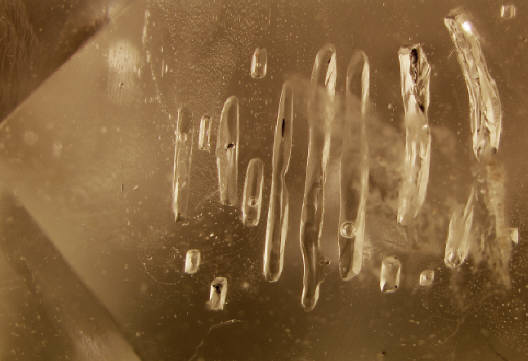
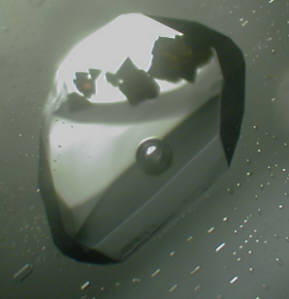
The photo to the right is of a fluid inclusion with many features. Here you can clearly see the double ringed round bubble (like in the above photo), but you can also see blocky solid crystals. The smaller ones are translucent with an amber color - maybe a salt. Both the sphere and the blocky crystals move around inside the space when the crystal is moved.
Note also the tiny bubble trails all in a row, much like what can be see in an ice cube. Also of interest are the sharp edges of the inclusion space, almost looking like a crystal. Do some "manifestations" (crystal shapped inclusions which are empty) come from such a process? They seem to be different than an inclusion of a baby floater crystal.
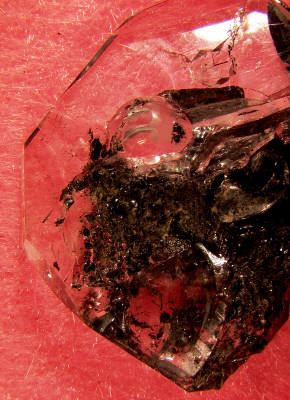
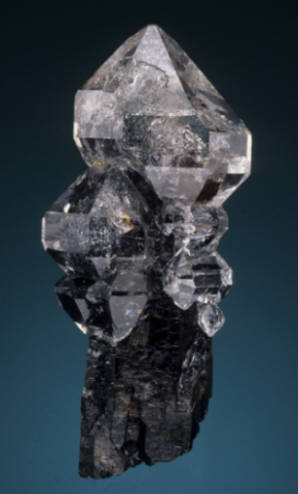



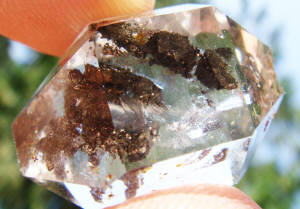
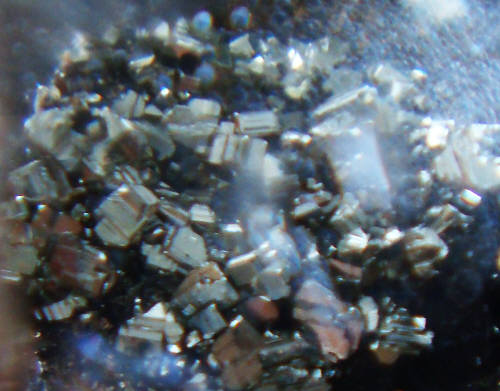
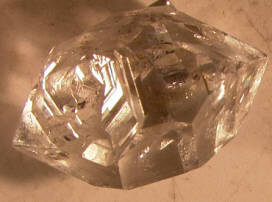
On the left: This might not be called an "inclusion" as it is the contact point between two crystals. A normal contact between two crystals has flat edges, like the crystal's outside form. But in many small clear crystals it is not uncommon (at least at this location) to find hopper-like step contacts. Contacts like this say something about how Herkimer Diamonds were formed, and it is likely that such contacts are present in many of the pockets containing small clear Herkimer diamonds surrounded by hydro-carbon. From Fonda, NY (DA) - 1992. Photo, Dr.C., 2008. Although we see this type of step like contact frequently we can look inside the crystal an it looks clear. There is no evidence of stps in the growth.
The exception to this are rare smoky phantoms, where the smoky coloring has highlighted the inner growth history of the crystal. These are shown in the photo on the bottom left. Please note that these are faint and quite different from the brown film phantom phantoms shown above. Photo is about 4 cm across of a crystal from AD, donated by Mike Eggleston (2012).
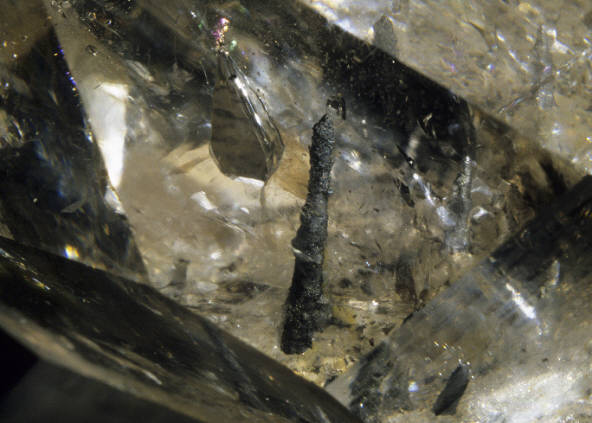
On the right is quite an unusual inclusion. Here is a "bumpy black rod" (most likely marcasite with alteration) part way inside the crystal and part outside. There also appear to be many fragments to the right of the rod and possibly an "enhydro" to the upper left. This is a Jeff Scovil photo of a specimen from the Bob Borofsky collection. It is from Little Falls, NY (TM), approximately 2.5 cm across the photo. Looking over the photos of Herkimers from this location, many have inclusions. Photo taken in 1999 and donated in 2009.
The photo at the top of this page is also of marasite rods as inclusions
After fractures hydrocarbon is probably the most abundant inclusion found within Herkimer diamonds. It can range in intensity from just a flake to a scattering of flakes as in the thin tabular crystal on the left (from TCR, photo by Dr. C. with the mine owners permission, 2009). The intensity can increase to where the crystal approaches being black like the crystals on the right.
Note also the sphere in the photo on the left. See the sphere page for an explanation.
There is black prismatic quartz in the photo on the lower right. This is a scepter, and a special type of inclusion (From the collection of Bob Borofsky).
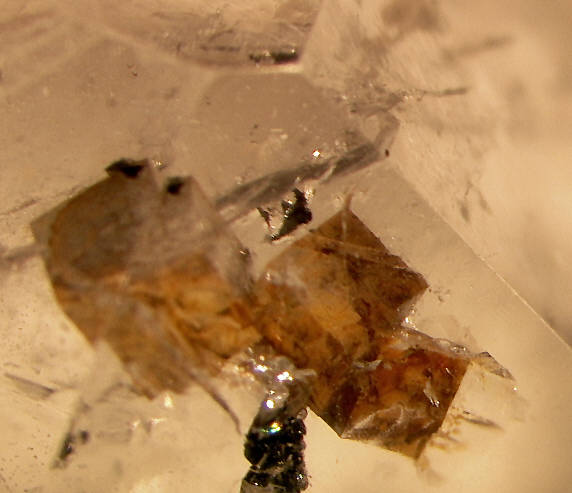
Nice "cubic looking" rhombs of tan dolomite as inclusions. The termination tip of the Herkimer diamond can be seen at the top of the photo. Fracture inclusions (F) and hydrocarbon (H) can also be seen. The crystal is from the AD, the photo covers about 5 mm across, taken 2009 Dr. C.
There is a nice photo of a dolomite inclusion on the quartz sphere page.
May, 2012
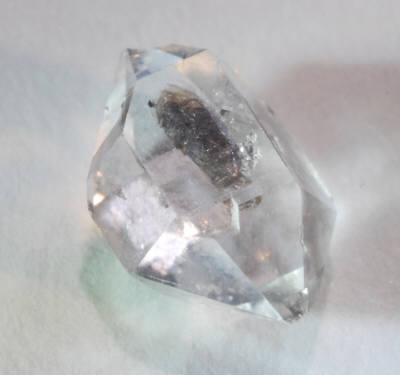
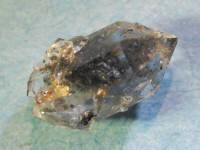
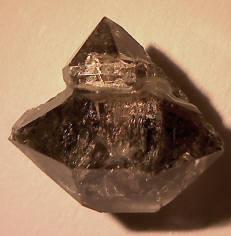
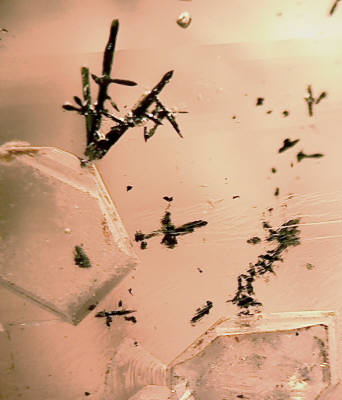
On the right is a close up photo of marcasite needles, again from DA (collected 1972 by Mike Hoisington). Photo by Dr. C., 2012. Note the rounded bumpy black surface. Compare this to the pristine angular surface of the needles when they are clean (go to the sulfide page to see this). More evidence for the oil and seed crystal migration theory.
It has always been interesting to note the occurrence of unusual tabular (flat) Herkimer diamonds. Miners and long time collectors usually have one in their collection and ask, "How do you explain this?" In the photo on the right are two tabular "baby floaters" as fluid inclusions. It may be that some tabular Herkimer diamonds grew from such seed crystals.
